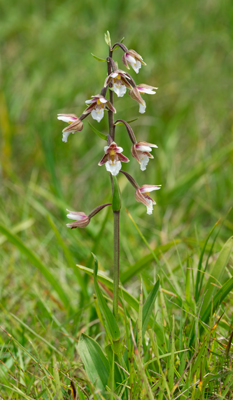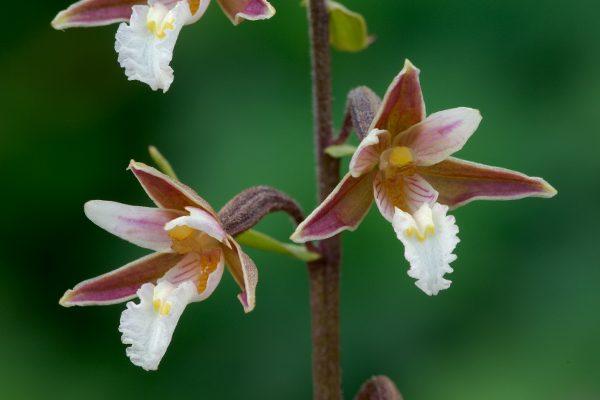Orchid matters
July has certainly been a challenging month photographically. The level of rain has had an impact on many flowering plants and insects. Persistent downpours can damage flowers and foliage making it difficult to find plants in pristine condition.
I have a passion for orchids and have, over the years, travelled to many different places and countries to see and photograph them! I still make the annual pilgrimage to many sites here in Ireland and although the weather has made it more challenging this year, there are still plants about.
The Broad-leaved Helleborine Epipactis heleborine is a summer species inhabiting as its name suggests, broad-leaved woodland – often occupying the margins and thickets. It can also be seen along roadside verges and ditches, where it can be easily missed as it often merges with the background vegetation.
This species can present a number of photographic challenges. It often grows in low light situations. Plants are generally tall and frequently attract the wind. The temptation here is to up the ISO, but I seldom do this preferring to shoot at the cameras base ISO unless conditions dictate otherwise. Fill-flash is often a necessity along with a sturdy tripod and electronic release. I also use a stem stabilizer of my own design (see Close-up on Macro A photographer’s Guide), which will help greatly with the close-ups of individual flowers, but not the in-situ shots.
Another problem is “colour shift”. Camera sensors can over emphasise the green foliage and the image can have noticeable cast. Fill-flash to a point helps to solve this problem, however some correction in your conversion software is usually required.
(Above left) Broad-leaved Helleborine in-situ, (above right) Marsh Helleborine in open dun slack.
Other orchids about at the moment include the Marsh Helleborine Epipactis palustris – a stunning plant that inhabits fens, damp grassland, marshes and dune slacks, especially with calcareous soils. In some sites plants appear in hundreds, but despite its profusion in certain areas is declining due to habitat loss.
Northern Marsh Orchid Dactylorhiza purpurella is another species in full flower at the moment favouring damp marshy ground. It is often commonly encountered in the hollows of dune slacks, lake-shore margins and machair grassland.





